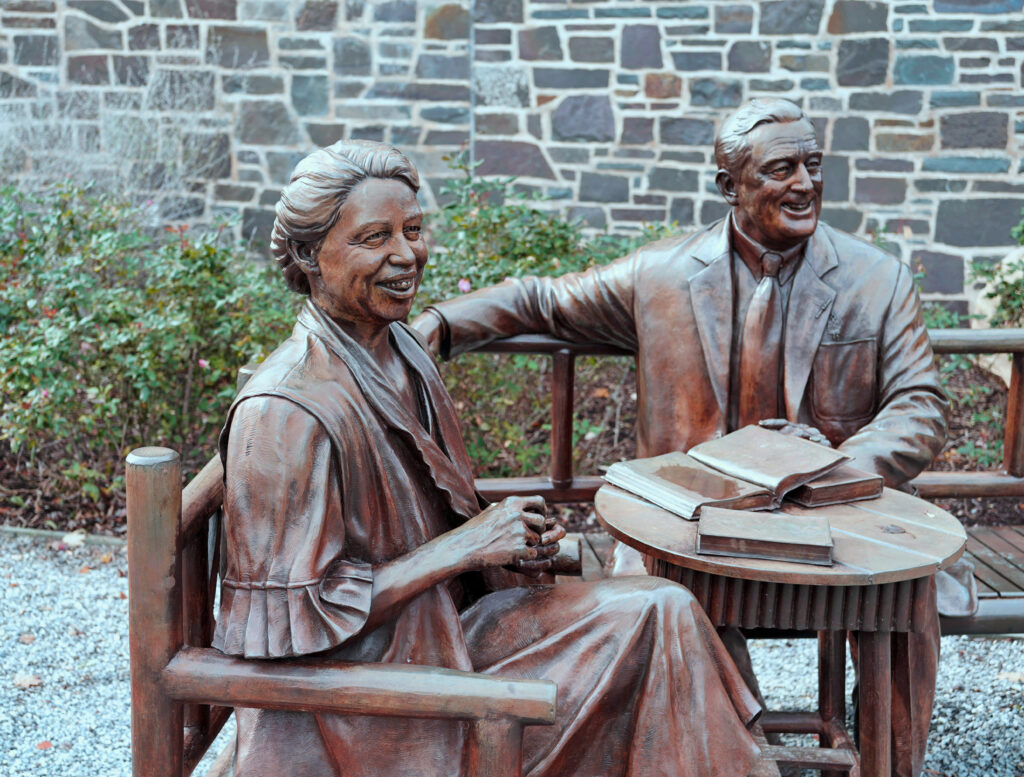Lessons in Leadership From Our First Ladies
This Women’s History Month, we look to female pioneers from the past to learn that true leadership is about voice, influence, and connections—not just a job title.

Women’s History Month is an ideal time to reflect upon the true meaning of leadership. A true leader does not need a specific job title to make a difference in the lives of students and their families. Leadership is a call to action to inspire others to achieve the vision we have created for our schools and communities.
While statistics show there are fewer women in top education leadership positions, female educators still have the potential to make a significant impact—and we know this because history has shown it to be true. Over the course of American history, women have made a difference without holding official leadership positions. Some of our first ladies have been able to influence the course of history while their husbands wielded the title and powers of the office of the U.S. presidency.
These impactful women can help us remember that leadership is about voice, influence, and connections.
Abigail Adams: Speak Up Against Inequities
Even before her husband, John Adams, was elected president, Abigail Adams openly shared her opinions as the Continental Congress met to draft the Declaration of Independence.
The women’s movement had not yet begun, and the voices of females were both unheard and unwanted. Yet, Abigail famously wrote a letter to President John Adams reminding him to “remember the ladies” as they created the foundation of our government. When he was elected in 1797, she remained openly passionate about women’s rights, particularly their access to education and the abolishment of slavery.
While President Adams did not yet take these ideas seriously, he did seek her opinions on other political matters. Her dedication to important causes earned her the unofficial title of “Mrs. President.” Her voice influenced the women’s rights and abolitionist movements and helped to change the course of American history.
Edith Bolling Galt Wilson: Use Influence to Effect Change
Edith Bolling Galt Wilson was known as the “Secret President” during the end of President Woodrow Wilson’s term. As Woodrow’s second wife, Edith refused to fill the traditional role of First Lady and instead became his confidante and assistant. She actively modeled rationing during World War I by wearing thrifted clothing and participating in Meatless Mondays.
However, when her husband suffered a stroke as the result of exhaustion, her role changed significantly. During his convalescence, she hid his illness from the outside world, including his cabinet. Edith became his secretary, bringing him important papers, screening issues to be brought to him, and reporting his decisions to government officials.
Her unprecedented access to high-level information resulted in her ability to influence Woodrow’s decisions. Ultimately, Edith was able to influence those who held power.
Eleanor Roosevelt: Lift Up Other Women
Eleanor Roosevelt’s impact on America started before she became First Lady. Married to President Franklin Delano Roosevelt (FDR), she was a leader in a variety of organizations including The League of Women Voters, Women’s Trade Union League, and the Women’s Division of the Democratic National Committee.
She connected with women through these organizations, as well as through speeches, advice columns, and books to inspire them to vote and to use their voices to change paradigms about women. Most important, she actively worked with women in leadership roles to strengthen her political voice. Eleanor lobbied FDR to appoint Frances Perkins as the first female Department of Labor leader. Elizabeth Read served as her personal lawyer and financial consultant, as well as her mentor in the Women’s Movement. Caroline O’Day was elected to the House of Representatives as a result of Eleanor being the First Lady to openly campaign for a candidate. Eleanor’s voice grew stronger due to the close connections she made with other female leaders.
Becoming an education leader is a decision, whether or not women have achieved positional authority. Leadership involves using our voices to influence others and to stand up for what we believe in. Our voices are a tool that gives us the power to make a difference.
Even without higher work titles, we can use our voices to influence other leaders who can make decisions and plan for the future. Most important, female leaders should create strong connections and support each other to have a far-reaching impact on the world of education.
History has taught us women achieve more working together than we can as individuals.
Jessica Zimmer is principal of Shelter Rock Elementary School in Manhasset, New York, and fellow of the NAESP Center for Women in Leadership.




